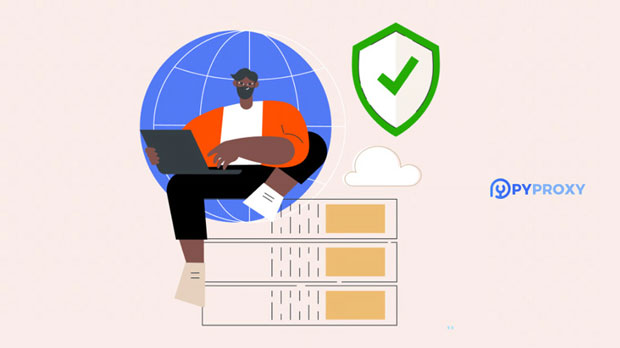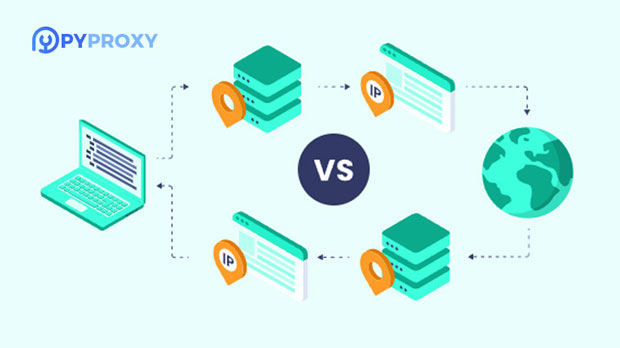In today's digital world, proxies have become essential tools for enhancing online privacy, security, and accessibility. Among the most common types of proxies are HTTP and socks5 proxies. These two types of proxies are frequently used for different types of network access, each with its unique advantages and use cases. HTTP proxies are designed specifically for web traffic, offering a simple solution for browsing the internet anonymously or bypassing restrictions. On the other hand, SOCKS5 proxies provide a more flexible and versatile solution, supporting various types of internet traffic, including emails, FTP, and even P2P connections. This article explores how both HTTP and SOCKS5 proxies function, their key differences, and how they can be effectively used to access different types of online content and services. 1. Introduction to Proxies: HTTP vs. SOCKS5Before delving into their specific uses, it is important to understand the fundamental differences between HTTP and SOCKS5 proxies. Both types of proxies act as intermediaries between a client (usually a user’s device) and the internet, forwarding requests and responses between them. However, their protocols and the types of traffic they can handle differ significantly.- HTTP Proxy: As the name suggests, HTTP proxies work with the HTTP protocol, meaning they are used specifically for web browsing activities. When a user requests a web page, the request is first sent to the HTTP proxy server, which then forwards it to the web server. The response from the web server is returned to the proxy server, which then sends it back to the user.- socks5 proxy: SOCKS5 proxies, on the other hand, are a more generalized type of proxy. Unlike HTTP proxies, SOCKS5 proxies do not limit their functionality to web traffic; they support a variety of protocols, including TCP, UDP, FTP, and others. This makes SOCKS5 proxies much more versatile and suitable for different types of network traffic.2. How HTTP Proxies WorkAn HTTP proxy serves as a gateway between a user and the internet specifically for HTTP and HTTPS traffic. When using an HTTP proxy, your web browser or application sends a request to the proxy server instead of directly connecting to the target website. The proxy then forwards this request to the website’s server, retrieves the response, and sends it back to the user.This process provides several key benefits:- Anonymity: HTTP proxies can hide the user’s IP address, offering some level of anonymity while browsing. The target website will only see the proxy server’s IP, not the user’s actual IP.- Geographical Restrictions: HTTP proxies are often used to bypass geo-blocked content, allowing users to access websites or services that are otherwise unavailable in their region.- Content Filtering: HTTP proxies can be configured to block access to specific websites or categories of content, making them useful for organizations or schools looking to control online activities.However, HTTP proxies have limitations. They only support HTTP and HTTPS traffic, meaning they are unsuitable for applications outside of web browsing.3. How SOCKS5 Proxies WorkSOCKS5 proxies are more flexible than HTTP proxies because they work with all types of traffic, not just HTTP/HTTPS. This includes email protocols like SMTP, FTP for file transfers, and even peer-to-peer traffic for torrenting or gaming. When a user connects through a SOCKS5 proxy, their requests are forwarded to the proxy server, which then routes them to the target server without changing the nature of the traffic.SOCKS5 proxies offer several advantages over HTTP proxies:- Versatility: SOCKS5 proxies are not restricted to web browsing and can be used for a variety of internet services, including FTP transfers, torrenting, and gaming.- Performance: SOCKS5 proxies tend to offer better performance when it comes to non-HTTP traffic, as they do not need to modify the data being transmitted.- Higher Security: SOCKS5 supports authentication, allowing users to ensure that only authorized individuals can access the proxy. This feature is crucial in environments where security is a priority.However, because SOCKS5 proxies handle a broader range of traffic, they can be more complex to set up and configure compared to HTTP proxies.4. Practical Applications of HTTP ProxiesHTTP proxies are ideal for use cases that focus on web browsing and HTTP-based services. Some common applications include:- Bypassing Content Filters and Censorship: Many users employ HTTP proxies to circumvent government censorship or network restrictions, particularly when accessing websites or content that may be blocked in their country or region.- Anonymous Browsing: HTTP proxies are often used by individuals who wish to browse the web anonymously, preventing websites from tracking their real IP addresses.- SEO Testing: Digital marketers and SEO specialists use HTTP proxies to simulate access from different geographic locations, helping them analyze local search results or test ad placements from various regions.These applications make HTTP proxies a popular choice for users focused solely on web traffic and anonymity in browsing.5. Practical Applications of SOCKS5 ProxiesSOCKS5 proxies, with their ability to handle multiple types of traffic, are well-suited for a broader range of activities. Some of the most common uses include:- Torrenting and P2P Networking: SOCKS5 proxies are particularly popular among users who need a secure and anonymous way to torrent or share files using peer-to-peer protocols. Since SOCKS5 proxies can handle UDP and other traffic types, they provide better support for torrenting than HTTP proxies.- Online Gaming: Many online gamers use SOCKS5 proxies to mask their IP address, avoid DDoS attacks, or access region-locked game servers. The proxy allows them to connect to servers with minimal lag while ensuring privacy and security.- Email Protocols: SOCKS5 proxies can also be used for secure email communication, supporting protocols like SMTP for sending emails or IMAP for retrieving them. This makes SOCKS5 an excellent choice for users who require privacy when accessing email accounts.In all these cases, the flexibility of SOCKS5 allows for more robust and secure network access compared to HTTP proxies.6. Key Differences Between HTTP and SOCKS5 ProxiesWhile both HTTP and SOCKS5 proxies provide anonymity and privacy, they differ in terms of their functionality and use cases:- Protocol Support: HTTP proxies only support HTTP and HTTPS traffic, whereas SOCKS5 proxies support a wide variety of protocols, including FTP, SMTP, and UDP.- Flexibility: SOCKS5 is much more versatile, supporting multiple types of internet traffic, while HTTP proxies are limited to web browsing.- Performance: SOCKS5 proxies tend to perform better for non-HTTP traffic, as they do not alter or interfere with the data being transferred, unlike HTTP proxies, which may need to modify data to fit the HTTP protocol.7. Choosing the Right Proxy for Your NeedsWhen deciding whether to use an HTTP or SOCKS5 proxy, it is essential to consider the specific needs of the user or organization. If your primary goal is to browse the web anonymously or bypass geographical restrictions, an HTTP proxy may be sufficient. However, if you require more versatile and secure network access, particularly for activities like torrenting, gaming, or email communication, a SOCKS5 proxy is likely the better option.ConclusionBoth HTTP and SOCKS5 proxies offer valuable tools for internet users seeking greater privacy, security, and access to restricted content. HTTP proxies are ideal for web browsing and HTTP/HTTPS traffic, while SOCKS5 proxies provide more flexibility and security for a wider range of internet activities. Understanding the differences between these two types of proxies and how they can be applied will help users make informed decisions based on their specific needs and use cases.
Jan 03, 2025
![arrow]()


















































